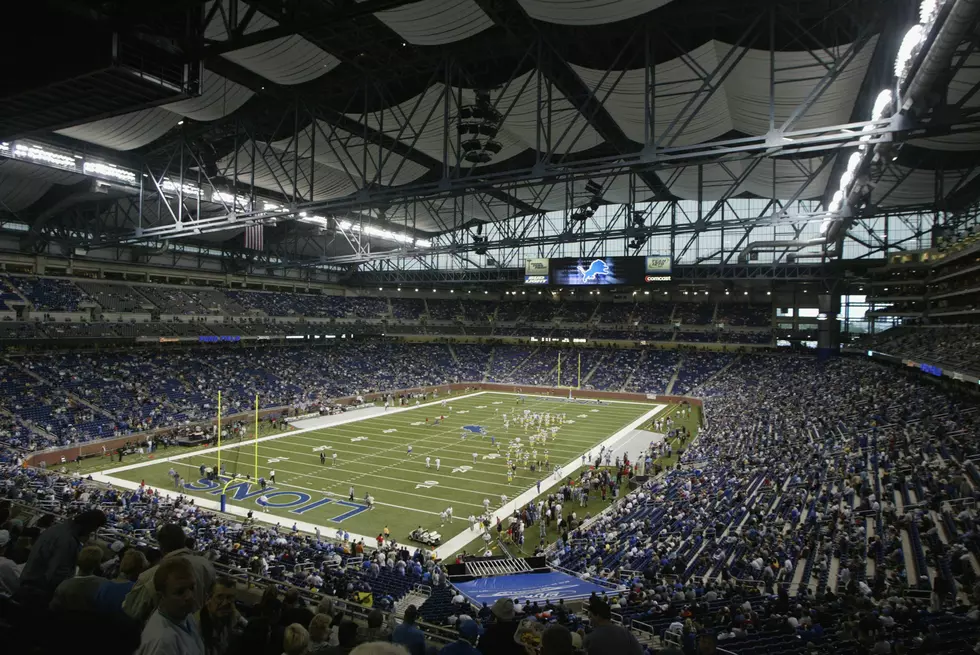
Grab A Lifejacket: Five Largest Shipwrecks In Great Lakes History
On April 23rd, reports came out that shipwreck hunters may have found the remains of a schooner that went down in Lake Erie almost two hundred years ago. The National Museum of the Great Lakes says later this summer, divers will work to determine if the discovered wreckage is the remnants of a ship called the Lake Serpent. It would be one of the oldest shipwrecks ever discovered on Lake Erie. The vessel was built in 1821 and was lost eight years later a few miles off the Ohio shoreline.
At least 6,000 ships are documented to have gone missing on the Great Lakes since the late 1600s, although that number is likely much higher. The Great Lakes Shipwreck Museum say around 30,000 lives were likely lost among those thousands of shipwrecks.
The following list includes the top five largest shipwrecks to happen on the Great Lakes based on the size of the ship, not the death toll or popularity. All hands on deck, here we go!
5. SS William C. Moreland - 600 ft. (1910-1910) - Lake Superior
You wouldn't normally think of wildfires contributing to a shipwreck, but they played a role in the fate of the SS William C. Moreland. On October 18, 1910, less than two months in service and on only her fifth voyage, she was stranded on Sawtooth Reef, off Eagle Harbor, Michigan, Lake Superior. The freighter was carrying over 10,000 tons of iron ore bound for Ohio. Winds and waves were mostly calm on Lake Superior, but visibility was hampered by smoke coming from several forest fires burning on the Keweenaw, Peninsula in the Upper Peninsula due to drought-like conditions.
There were many attempts to salvage the ship, and eventually the 278-foot long stern was recovered and used on another vessel. The remains of the SS William C. Moreland rest in 25-feet to 40-feet of water. Ice has flattened much of the wreckage over the years, but some machinery and numerous pieces of her hull still remain at the wreck site which is popular among divers.
4. SS Daniel J. Morrell - 603 ft. (1906-1966) - Lake Huron
This ship met its fate after 60 years in service during a fierce storm on Lake Huron and all but one of her 29 crewman perished when it sank. In the early morning hours on November 29, 1966, the Morrell was making its last run of the season from Buffalo, NY to Taconite Harbor, MN. The ship and crew encountered winds over 70 mph with waves reaching the height of the ship at 20 to 25 feet. At 2:00am, crew members were forced to the deck and many jumped to their deaths in the freezing waters while the others got into a raft. The freighter broke in two a few miles off the tip of Michigan's thumb northeast of Harbor Beach.
The Morrell was not reported missing until a day and a half later when it was overdue at its Minnesota destination. A few hours later the lone survivor, 26-year-old Watchman Dennis Hale, was located by a Coast Guard helicopter in a raft wearing only underwear, a lifejacket and a pea coat. The bodies of three of his crewmates were also in the raft, which Hale had survived in for nearly 40 hours.
3. SS Carl D. Bradley - 639 ft. (1927-1958) - Lake Michigan
Similar to the Morrell, the SS Carl D. Bradley went down in a storm during its last run of the season, but this one happened on Lake Michigan and was much more destructive. On November 18, 1958, the Bradley was heading to the harbor at Rogers City, where most of the crew lived, after departing from Gary, Indiana the day before. According to the official U.S. Coast Guard report, gale winds from 50 to 65 mph were forecast, but the self-unloaded bulk freighter proceeded along the Wisconsin shore at 5 to 12 miles out.
At around 5:35pm, southwest of Gull Island, a loud noise was heard followed by a vibration. A crew member noticed that the stern was sagging. The captain ordered the engines to stop and sounded the alarm to abandon ship. A distress signal was sent to the Coast Guard shortly before power lines were severed. As the crew attempted to lower the two lifeboats, one of them got tangled in cables and caused the other one to be at an impossible angle to reach.
Witnesses on a nearby cargo vessel using binoculars reported seeing the ship explode shortly after the lights went out. That vessel and others tried to navigate to the site, but the weather conditions prevented any rescue attempts.
Just after 8:30am and 15 hours after the sinking, two survivors were found on a liferaft. Elmer Fleming and Frank L. Mays had clung to life on a raft in Lake Michigan, tossed and turned by nearly 40-foot waves during a gale. The other 33 members had perished and only 17 of their bodies were recovered.
The wreckage was located in the spring of 1959 with sonar equipment. There were mixed conclusions as the two survivors said the ship broke in two, but the U.S. Army Corp of Engineers concluded the Bradley was in one piece. In 1997, an expedition using a remotely operated underwater vehicle obtained video showing two sections about 90 feet apart, confirming what the two survivors reported.
2. SS Edmund Fitzgerald - 729 ft (1958-1975) - Lake Superior
This is by far the most popular and commercialized shipwreck in the history of Great Lakes shipping. On November 10, 1975, the SS Edmund Fitzgerald sank in Lake Superior on its way to Detroit carrying full cargo from Wisconsin. The ship was caught in a severe storm with near hurricane force winds and waves up to 35 feet. Around 7:10pm, the Fitzgerald quickly sank about 17 miles from Whitefish Bay. All 29 crew members perished and none of their bodies were ever found.
The wreck was found November 14 just a few days after the sinking. In May of 1976, the U.S. navy used unmanned vehicles and discovered two large pieces in about 530 feet of water. In 1980, the first manned expedition to the Fitzgerald site took place. More dives to the wreckage followed and in 1995, the bell was salvaged.
The exact cause of the sinking has never been officially determined although there are several wide-ranging theories. They include structural failure, rogue waves, bad charts, inaccurate weather forecasting, lack of instruments, poor maintenance and complacency by the Captain among others. Despite no clear conclusion about why the freighter went down, the sinking of Fitzgerald led to several changes in shipping practices in the Great Lakes.
Contributing to the enduring fame of this shipwreck is the 1976 tribute song by singer-songwriter Gordon Lightfoot "The Wreck of the Edmund Fitzgerald". Several books have also been written and memorabilia like t-shirts and coffee mugs have been available for years commemorating the ill-fated vessel.
1. Leecliffe Hall - 730 ft. (1961-1964) - St. Lawrence River
Although it didn't technically happen in one of the Great Lakes, the sinking of freighter Leecliffe Hall on the St. Lawrence River which connects Lakes Erie and Huron is considered the largest shipwreck Great Lakes history.
On September 23, 1961, the Canadian freighter collided with another vessel in dense fog at around 5:00pm. Four hours later, the large vessel disappeared into the water 65 miles away from Quebec. Most of the crew safely escaped, but one stayed on board trying to tow the freighter to shore. Two other crew members returned to help. Despite their efforts, the ship sank and the three who had tried to save it also lost their lives.
Several salvage attempts were made to retrieve the vessel which was in about 90 feet of water. In 1966, Hall was officially determined to be a total loss and efforts to raise the ship were abandoned. Investigations concluded that both ship captains were to blame for the collision saying they were not using their radars wisely and were traveling too fast for he conditions. The Captain of Hall had his license suspended for the rest of the shipping season.
More From WBCKFM









